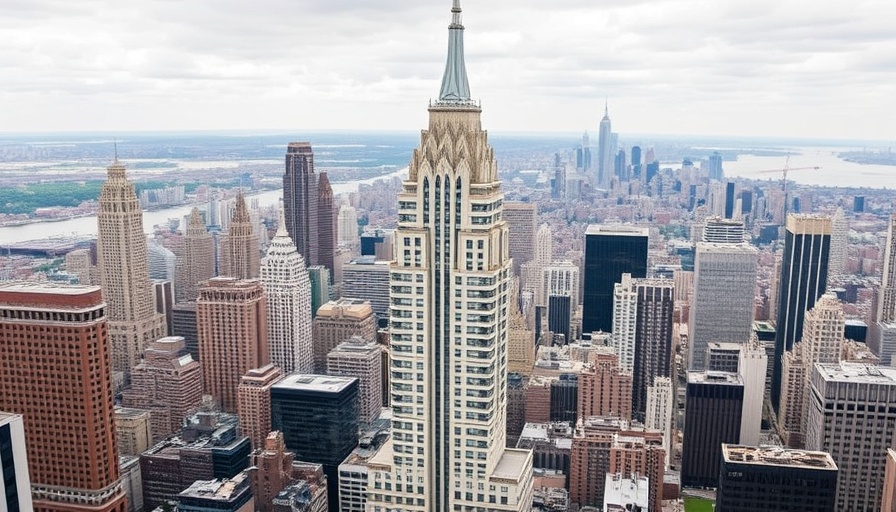
The Chrysler Building: A Monument of Marvel and Mending
The Chrysler Building stands tall in New York City, a beacon of Art Deco magnificence and history. Completed in 1930, at 1,046 feet, it briefly claimed the title of the tallest building in the world. Yet, as it approaches the centennial mark, this architectural jewel is now up for sale, leaving many to ponder its future amidst a backdrop of disrepair. With ongoing issues like faulty elevators and pest problems, real estate experts note that despite its iconic status, the building may fetch a lower price than expected. How has the Chrysler Building, once seen as a monumental success of American industry, fallen into such a state of decline and what does it mean for the future?
A Tale of Two Buildings
Ruth Colp-Haber, a real estate broker familiar with the property, describes it succinctly: "It’s a tale of two buildings." The Chrysler Building represents both an architectural wonder famous worldwide and a property struggling to meet contemporary demands. Amenities like larger windows and modern technologies offered in newer skyscrapers often overshadow its historical value. As companies prioritize open-floor plans and innovative office designs, the building’s allure has waned, showcasing a broader shift in tenant expectations.
Historical Context: From Glory to Grit
The Chrysler Building was commissioned by the car company founder Walter P. Chrysler, embodying the optimistic spirit of the late 1920s. Designed by William Van Alen, its Art Deco architecture aimed to signify a new American era, accentuated by its iconic stainless-steel spire. Yet, as time passes, maintaining the charm and structural integrity of such buildings becomes a challenge. The purchase frenzy in real estate—where entities like Abu Dhabi invested heavily—has now given way to financial turmoil, such as Signa's recent insolvency.
Modern Trends: Luxury vs. Legacy
As the real estate market evolves, the presence of aging New York landmarks like the Chrysler Building faces scrutiny. Companies are increasingly drawn towards modernizations that cater to today's workforce. While the lobby of the Chrysler remains a hotspot for tourists, the rapid turnover of newer buildings presents a unique dilemma: should historical buildings adapt to contemporary tastes, or should they retain their original charm, regardless of market trends?
Future Predictions: What Lies Ahead?
Real estate experts project a potential renaissance for the Chrysler if it can pivot toward modern needs without sacrificing its historic essence. David Heller from Savills emphasizes the opportunity to "reimagine" the building. This could entail refurbishing its spaces while respecting its architectural heritage, mixing old with new to attract tenants once again. Cities globally face similar challenges as historic structures struggle to coexist with futuristic designs. Will others look to the Chrysler Building as a model for combining nostalgia with innovation?
Community Connection: The Heart of San Diego and Beyond
For the San Diego residents looking to the east, the fate of the Chrysler Building resonates beyond New York. It underscores a crossroads many cities face, where modern development pressures challenge the preservation of cultural legacies. Just as local historic sites in San Diego attract both tourists and community pride, the discourse surrounding the Chrysler Building invites a collective reflection on what cities choose to preserve for future generations.
Getting Involved: How You Can Help Preserve History
For those in San Diego and beyond, community action can play a pivotal role in preserving historic sites. Supporting local initiatives that encourage conservation, raising awareness of the stories behind our structures, and advocating for historic designations can all contribute to a richer, more diverse urban tapestry. Just as the Chrysler Building once represented the hopes of a generation, dwindling structures today still hold the potential for future rejuvenation.
As we reflect on the legacy of the Chrysler Building, let’s encourage conversations around the significance of maintaining our architectural heritage while embracing transformations that showcase our ongoing evolution as a society.
 Add Row
Add Row  Add
Add 




Write A Comment